Beware the Wail of the Banshee – This Irish Fairy isn’t as Scary as You Think
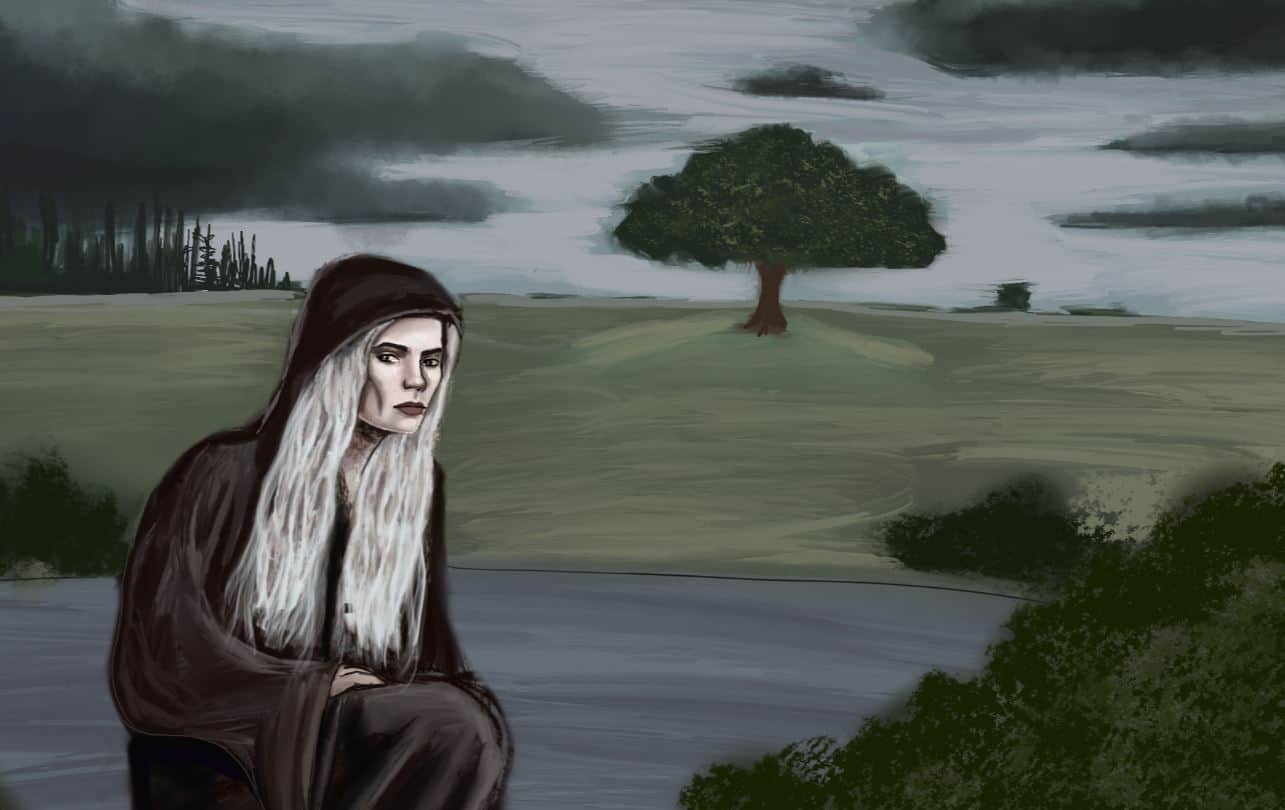
Updated On: April 22, 2024 by ConnollyCove
Irish mythology is famed for its richness of detail, its abundance of memorable characters, and its meaningful fables. From the most well-known tales, including the Cattle Raid of Cooley and the Children of Lir, to lesser-known gems involving the warrior-queen Carmán or the fierce warrior Scáthach, Ireland can claim an abundance of folkloric wonders.
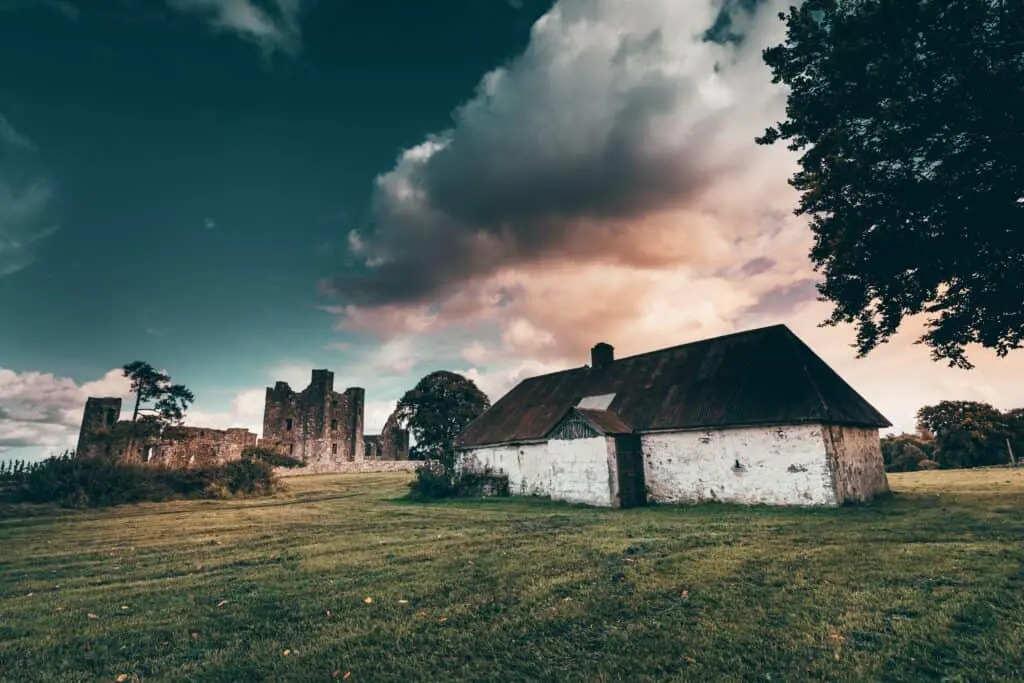
In this article, we will explore the legend of the banshee spirit. The banshee ghost is often seen and portrayed as evil due to her association with death, but this isn’t the case in Irish mythology. The banshee doesn’t create or cause death. They simply mourn it and alert certain families of the death of a loved one.
This article is not discussing Martin McDonagh’s film, though don’t worry, we do have a complete guide to The Banshees of Inisherin, one of the best Irish movies to come out in recent times, starring Irish actors and filmed on Achill island off the coast of Mayo.
The true legend of the banshee has been obscured and misunderstood. There is much more to this ghost story than meets the eye.
Table of Contents
So, What Exactly Is a Banshee?
The Banshee fairy is a female spirit who lives by the river. They can appear as an old hag or a young and beautiful woman. The Banshee was seen as the omen of death and only cried for certain ancient Irish families (with names such as O’Neil, O’Connor, and O’Donnell), often staying near the home of a particular lineage for generations.
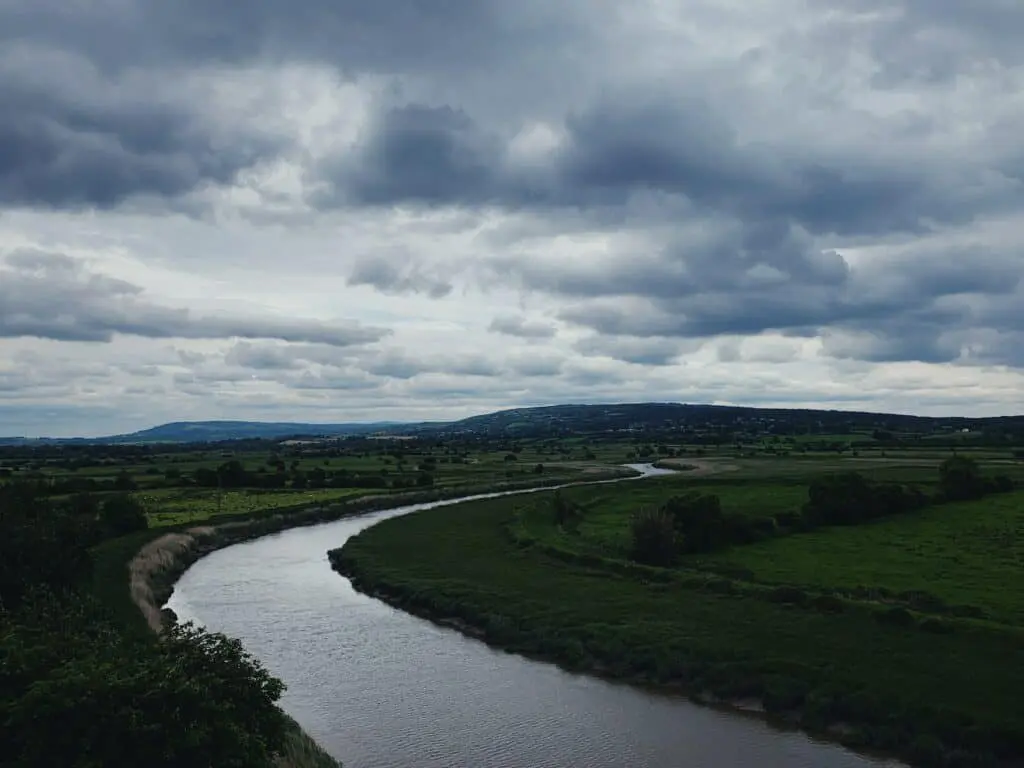
In Ireland and Scotland, it was once traditional for women to wail, or keen, at funerals or Irish wakes, which the Keen of the Banshee inspired. Hearing her cry signalled that death was nearby.
Alleged newspaper reports of hearing Banshee ghosts are as old as 1893, but the creatures are believed to have existed in Celtic folklore long before. According to legend, the six noteworthy families of Ireland—the O’Neills, O’Donnells, O’Connors, O’Learys, O’Tools, and O’Connaghs—each had a female spirit who would act as the harbinger of death for their family.
Having foresight, the banshee would appear before the death occurred, weeping for the loss in the family. It was believed that the banshee fairy sang such a sad song because she was a family friend. She was not anything evil; she was simply mourning an unavoidable and tragic death.
If you are interested in the darker side of Celtic mythology, check out our guide to evil monsters in Irish folklore!
According to Celtic folklore, a Banshee ghost would sometimes perch on a windowsill in the form of a bird, where she’d remain for several hours or even days until death came to call. Often, as the Banshee escapes into the darkness, witnesses have described a bird-like fluttering sound. Thus, some believe that banshees are birdlike creatures.
The Banshee spirit also wails in areas such as woods, rivers, and rock formations. In Waterford, Monaghan, and Carlow, there are wedge-shaped rocks called “Banshee’s Chairs.”
The film The Banshees of Inisherin features aspects of Irish folklore and mythology.
Etymology
Banshee is derived from the Irish language and is known as Gaelic. She is also called Banshie, Bean Si, Bean Sidhe, and Ban Side, among other name variations. Banshee is comprised of two words in Irish, ‘bean’ and ‘sídhe’, which translates to ‘female fairy’ or ‘woman of the otherworld’.
However, some surviving tales and lore of the Banshee come from outside Ireland. In Scotland, the Banshee may be called Ban Sith or Bean Shith.
Irish folklore was passed down from word of mouth from generation to generation. It wasn’t until centuries later that Irish myths were transcribed by Christian monks who altered and omitted details to make them suitable for Celtic Christianity.
As a result, many parts of Irish folklore are murky and mysterious compared to other mythologies, which some people may find annoying. However, this ambiguity allows people to conclude how the myths came to be and create connections to different parts of the folklore.
Every community and family in Ireland had their version of popular tales that had evolved naturally over time. Ireland has no correct or genuinely complete version of Celtic mythology, leading to many interesting variations of familiar stories.
The Roots of the Legend of the Banshee
The Otherworld of Irish mythology can be interchangeable in specific texts as either the realm of the fairy folk, the land of youth (known as Tír na nÓg), or the afterlife (land of the dead). Because of this, the origin of the Banshees is hard to determine.
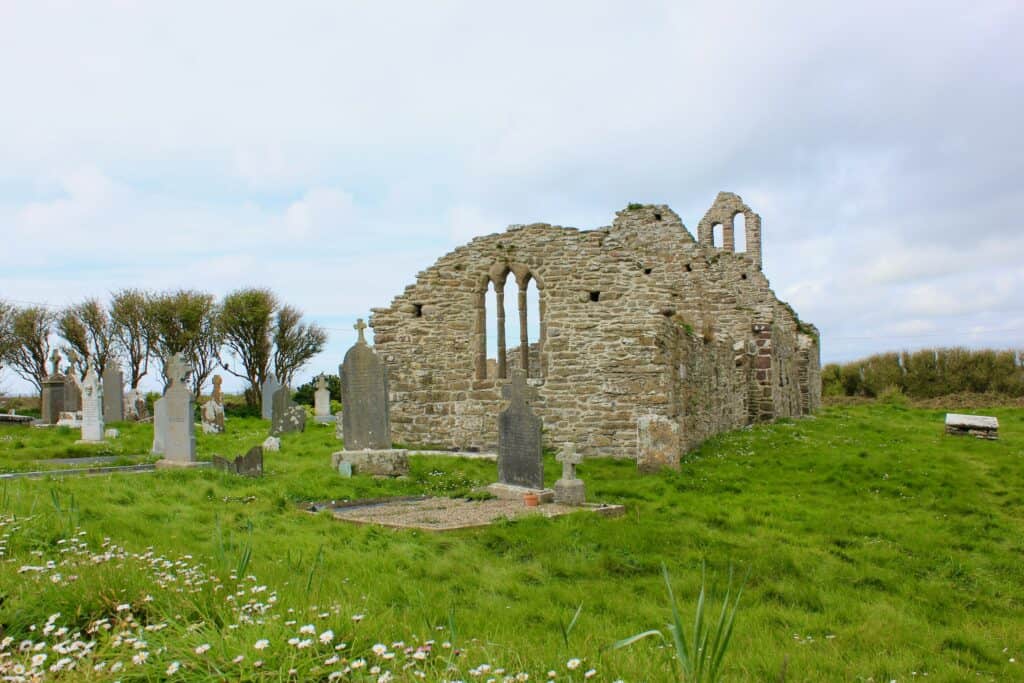
However, the belief that they were women who died prematurely, tragically or unjustly is widely agreed upon, possibly to create an atmosphere of sorrow and grief around the spirits and to make their wailing even more devastating.
In mythology, the Banshee spirit was linked to the fairies and was a part of the mystical race, the Tuatha De Dannan. The Tuatha de Danann were the Celtic Gods and Goddesses of Ireland. They were driven underground by the Milesians, and over time, they descended into all the fairies in Irish myth.
It shows us that even though Banshee is a commonly known figure, the familiar spectre remains mysterious, and many theories account for Banshee’s sightings.
The Banshee is still one of a handful of mythical creatures that, although widely known over a diverse geographical area, is not commonly seen outside of Irish folklore. Gaelic oral traditions, passed down for centuries and written down only in the last five hundred years, are the most common place to find the banshee.
She appears in the fourteenth-century text Chogaidh Gaeil are Gall. Such traditions changed to include poems, limericks, nursery rhymes, and superstitions that carried on to the twentieth century. However, actual belief in such creatures was scarce at best.
Origins of the Banshee Spirit
Irish history is full of legends of leprechauns and fearsome warrior kings. These days, the Irish are more well-known for shamrocks, St. Patrick’s Day and our love of brewing Guinness, but that is only the tip of the iceberg regarding our Irish traditions and culture.
While it isn’t known for sure, there is evidence that the origin of the Banshee fairy can be placed sometime in the early 8th century. An Irish tradition of the time saw women lament the passing of a warrior or soldier with a mournful song.
These women were reputedly offered alcohol as a method of payment. At this time, the Irish Church considered this bartering system contradictory in God’s eyes, and these women were punished for their activities by forever becoming Banshees.
This could be the reverse; keening was probably performed after the banshee legend arose.
Sightings of a Banshee ghost have been reported infrequently throughout history. Part of the legend of the Banshee does claim that if one is seen or thinks it has been seen, it will vanish inside a cloud of smoke or mist, and the only evidence that it was ever there is the flapping of wings.
As scary as the cry of the Banshee is said to be, the Irish do not believe that a Banshee is ever actually responsible for a death that could follow shortly afterwards. It was thought that the Banshee would protect individuals who were pure or noble if death were to claim them.
In contrast, pop culture and horror movies usually portray them as nothing more than scary ghosts, creating a new type of modern myth in and of itself.
Technically, the Banshee spirit is considered to be part of the Fae (or fairies) family, though banshees are not actually considered fairies by modern standards. In Irish myth, the term fairy is used to describe any supernatural yet human-like figure. By modern definitions, the Banshee is its own creature with some ties to the fairy world.
As discussed in more detail in our fairy tree article linked in the section below, fairies fall into two classifications.
The first is the Aos Sí (people of the mounds), descendants of the almighty Celtic deities or the Tuatha de Danann. The Milesians defeated them and subsequently drove underground. They were more similar to humans than traditional fairies such as the Banshee.
The second type of fae was known as solitary fairies, which comprised several subcategories of creatures, including leprechauns and other smaller, more mischievous beings.
A Quick Overview of Fairies
A fairy (fey or fae, collectively known as the wee folk, good folk and people of peace, among other names) is a spirit or supernatural being based on the fae of medieval Western European folklore and romance. Even in folklore that uses the term “fairy,” there are many definitions of what constitutes a fairy.
Sometimes, the term is used to describe any mystical creature of humanoid appearance, including the Banshee. Other times, it is only used to describe a specific type of more ethereal creature. Many folktales mention fairies, and they appear as characters in stories from medieval tales of chivalry to Victorian fairy tales. They can even be found in present-day modern literature.
Some scholars contributed fairies to a folkloric belief concerning the dead. This is noted in Celtic folklore by many common descriptions of fairies and the dead. These include legends being told of ghosts and fairies, the Sidhe mounds being burial mounds, the danger of eating food in both Fairyland and Hades, and both the dead and fairies living underground.
You may want to check out our full article on fairy glens or fairy trees to learn more!
Sin and Superstition Surrounding the Banshee Ghost
In the Middle Ages, some Irish people believed in the presence of such creatures, who were thought to watch over the noble families of the Emerald Isle. A Banshee fairy would stay close to each family until all of its members passed away and were safely buried.
It was believed the Banshee protected the descendants of the original Milesian families, which may contradict their connection to the Tuatha de Danann. This is where things may get a bit confusing, but fear not; we have an explanation!
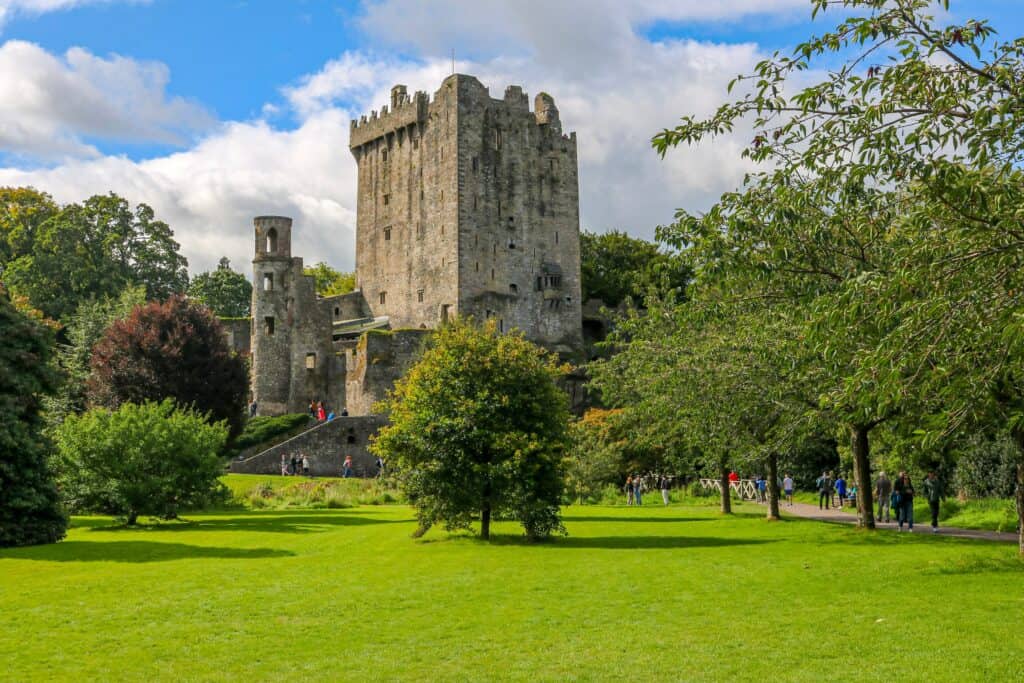
According to mythology, the Milesians were the last race to settle in Ireland and are the group that modern Irish people originated from. The Milesians were descended from Gaels, an older Irish race who sailed from Hispania (Spain) to Ireland after hundreds of years of travel.
According to some myths, they never actually fought with the Tuatha de Danann but instead agreed to split the land between them. The Milesians took the natural world above ground, and the Gods took the land below, with fairy trees, water, and burial mounds being the entrance from one world to another.
It is said that the Tuatha de Danann knew that they would lose the battle with the Milesians, so they made this deal instead. They had the gift of prophecy, so why would they fight a battle they knew they would lose?
Sin and consequences fall under the domain of the mythical spirit of the Banshee. If a person lived a life of selfishness or decadence or committed cruel acts during their lifetime, it was believed that their soul would remain close to the earth, suffering in penance. The Banshee would always be there to make sure this punishment was carried out.
Conversely, if a person lived a life filled with kindness, selflessness, and good deeds, their soul would dwell in peace and happiness for eternity. Although still tied to the earth, the soul would be content, and the Banshee would ensure this.
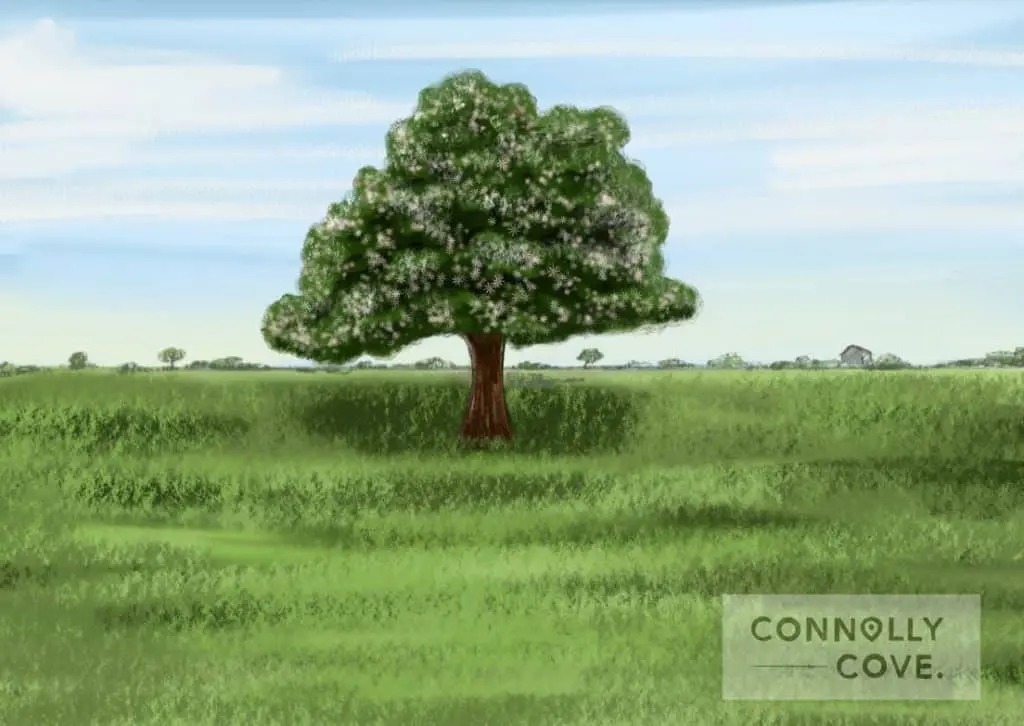
It was also a common belief in Ireland that a particular Banshee ghost would tie herself to one individual family and serve as their singular warning of imminent death. If a group of Banshees were heard howling, it meant that someone very important or holy in a wealthy Irish clan was about to succumb to death’s fatal charms.
Each Banshee spirit has her own mortal family to watch over. Unseen, the Lady of Sorrow attends the funerals and wakes up the beloved dead. However, sometimes, in the dark of night during the vigil, her voice blends in with the lamenting wails of the mourners.
Some Irish families that emigrated to the USA have brought their family Banshee. However, for the most part, Banshee sightings have been limited to Ireland and Scotland, where the Banshee still grieves for the family member near the traditional family home, even in that person’s absence.
The Many Faces and Forms of the Banshee
The deeply rooted superstitions surrounding her role in death and mourning kept the legend of the Banshee alive throughout the centuries. As the myth of the Banshee took hold, more contradicting details about the appearance of this ghostly apparition were revealed.
Some would see the Banshee as a fearsome old hag, frightful to behold, while others would claim to see a beautiful woman. In some cases, the Banshee fairy was reported to look like a simple washerwoman or laundress. The clothes she tended to wash were blood-stained, and the armour she washed belonged to a soldier who would die in their next battle.
As mentioned, Banshee can manifest in many forms and disguises, the most common of which is the appearance of a beautiful or ugly woman. But they are also believed to appear as animals like the weasel, stoat, hare, or hooded crow. These animals were commonly associated with witchcraft in Ireland in the past, which probably explains the connection.
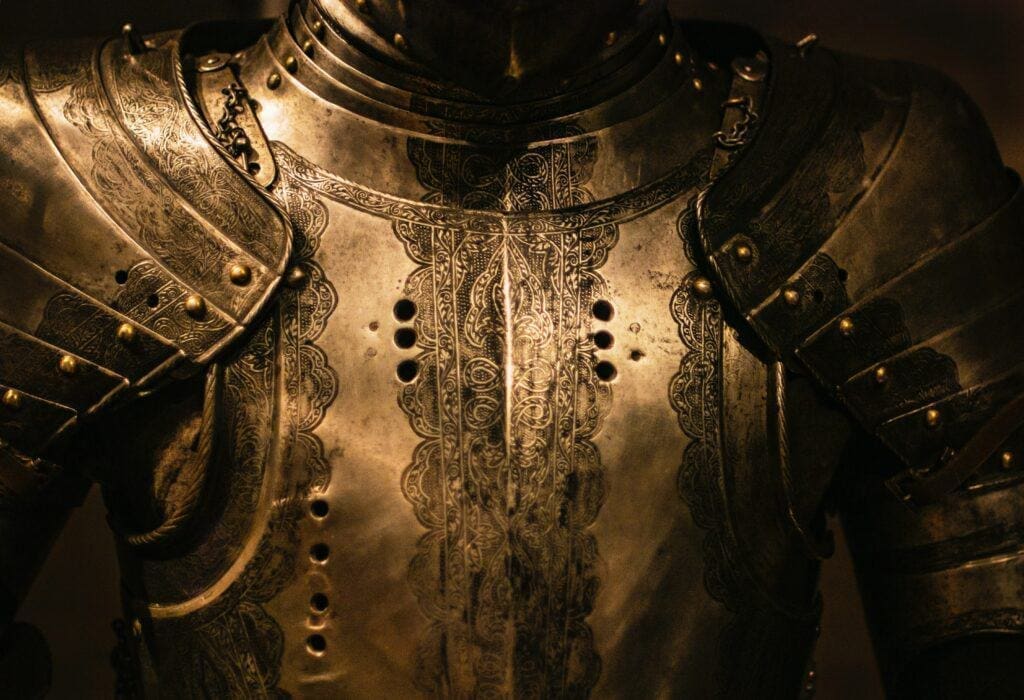
The Banshee is usually perceived as being quite fair, with long, pale hair that she grooms with a special silver comb. According to superstition, finding a comb on the ground and picking it up is extremely bad luck because a Banshee has placed it there to lure the unsuspecting and lead them to ruin.
An old Irish poem refers to the appearance of the Banshee in the morning:
‘Hast thou heard the Banshee at morn,
Passing by the silent lake,
Or walking the fields by the orchard?
Alas! that I do not rather behold
White garlands in the hall of my fathers.’
While it is on record that the Banshee has been heard at noon, she is rarely seen or heard by daylight. The night is the time she generally chooses for her visits to people.
The Irish death bringer is considered to be a fairy or elemental spirit. Still, the Banshee, as seen in the Americas, is depicted as more of a ghost that shares little other than appearance with the Irish messenger of death.
Banshees Around the World – Fireside Stories of the Banshee Fairy
An Eerie Memoir
One of the oldest and best-known stories of the banshee is told in the Memoirs of Lady Fanshaw (Scott’s – Lady of the Lake). As the story goes, in 1642, Sir Richard and his wife, Lady Fanshaw, decided to visit a friend in a baronial castle. A dreadful and piercing cry awoke the regal lady. “Then she beheld in the moonlight a female face and part of her figure hovering at the window.”
The apparition continued to exhibit itself for some time and then vanished with two shrieks similar to that which she heard at first. The following morning, she related the incident with terror in her voice. Her host remarked, “What my dear Lady Fanshaw had witnessed and heard was a banshee, and her wailing forecast of death came true as a near relation of my family expired last night in the castle.”
The Mysterious Castle
Set on the northeastern shore of Lough Neagh, Shane’s Castle was a commanding presence for many centuries. Known initially as Eden-duff-carrick, the castle was reinstated to the O’Neill clan by King James in 1607.
After this, it became known as Shane’s Castle. In her 1913 book The Story of Belfast and its Surroundings, Mary Lowry cites Shane McBrien O’Neill as the owner who changed the name to Shane’s Castle and gives 1722 as the change date.
The O’Neills were, at that time, in possession of the castle that belonged to their ancestor, the great Shane O’Neill, or the O’Neill Mór, as he was also known. In 1562, O’Neill Mór ruled or controlled most of Ulster.
After his death, his many sons were known as the McShane, the sons of Shane, and soon after, the Christian name Shane became popular among his descendants. So, the name Shane’s Castle has many potential origins because of its popularity.
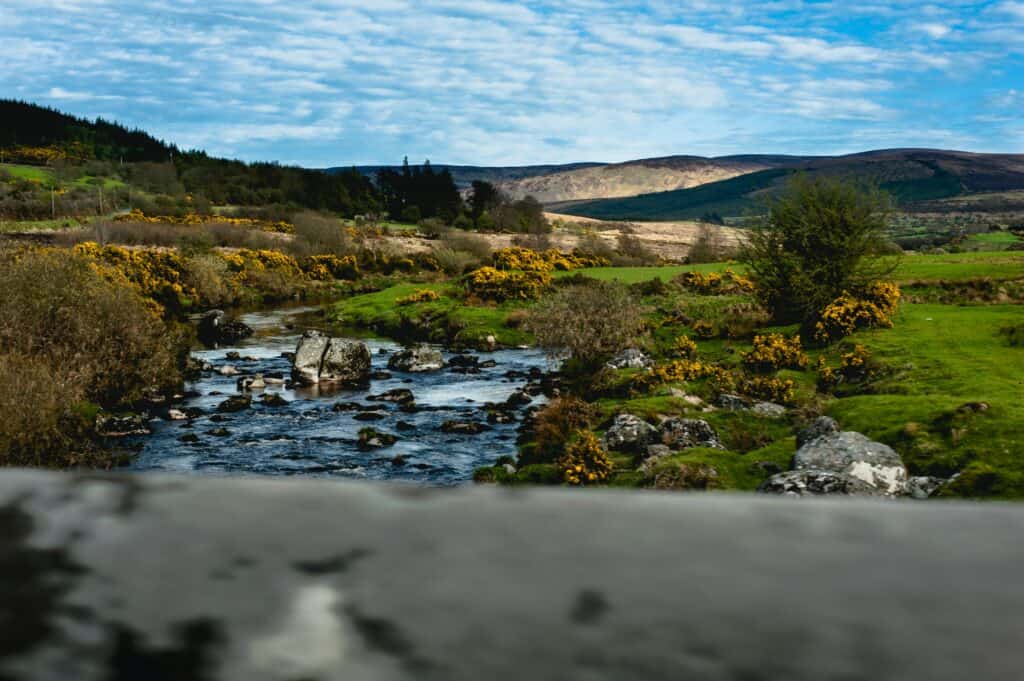
Although the O’Neills held many castles, Eden-duff-carrick contains a particular piece of history. There is a stone carving of a head inset into one of the tower walls, known as the black head of the O’Neills or the black brow on the rock.
It’s thought that this stone carving predated the castle for some centuries. The line of the O’Neill’s will end if the head ever falls from its position on the castle wall. Luckily for the O’Neills, the tower containing the head survived when their banshee burned the castle.
One source suggests that the origin of the O’Neill Banshee lies in an act of revenge by the fairies. One of the early O’Neills was returning from a raid when he found a cow with its horns tangled in a hawthorn tree. Single hawthorns (fairy trees) are sacred to the sidhe or fairy folk, so the fairies now regarded the cow as their property. Foolishly, the man freed the animal and incurred the anger of the fay.
When O’Neill arrived at his home (which presumably was not Eden-Duff-Carrick, as that was built much later, but may have been where the black head of the O’Neills originally stood or an older building in the exact location), he found that the fairies had taken his daughter to the bottom of the lough.
The name of the lough in this story is not specified, but the nearby waters of Lough Neagh were said to have healing properties associated with the bit of folk, so this is a good guess.
The girl was allowed to return to let her father know she was safe in the fairy kingdom, but she could only return from then on to warn of impending death in the family in the form of keening. This source names her as Kathleen, which is of Anglo-Norman origin and would seem to be a more recent alteration to the ancient legend.

Maeve is a very old Irish name, found in the oldest of sagas, and appears more in keeping with the Banshee myth, so it is sometimes believed to be the original name in the story.
The ending -een is a common diminutive in Irish; it is an affectionate twist added to a name that would seem to reinforce the story that the Banshee spirit was originally a much-loved daughter of the house. This explains why the Banshee wants to warn families instead of harming them. Kathleen’s or Maveen’s death and forced journey to the Otherworld fits the tragic origin of the Banshee.
The ruins of the castle today are unusual, as the castle was being rebuilt by Richard Nash, the architect of Buckingham Palace when a fire broke out. The conservatory was already completed, and it survived the blaze, but the main block of the castle was destroyed.
Visitors can get a glimpse of the plans for the restored castle from the completed conservatory while touring the ruined remains of the main block, towers and curtain wall. A fortified esplanade (promenade), studded with a cannon salvaged from an English war, stands guard over the shoreline, and an exciting family tomb and statues can be seen on the grounds.
The castle boasted an impressive series of vaults and basement chambers connected to a long underground passage. The passage was reputedly used as the servants’ entrance, but it is possible that it was initially intended as a refuge or escape route. Unfortunately for tourists, these vaults are now closed to the public.
The Banshee was said to be heard in Coile Ultagh, the “Great Wood of Ulster”, which grew by the castle on the shores of Lough Neagh. These woods were where Shane O’Neill had marched his army in 1565 on his way to defeating the MacDonalds at the battle of Glentaisie, which cemented his authority over Ulster.
There’s still some of the great wood left in the grounds of Shane’s Castle, although much of it has gone to farmland and housing developments.
After the Flight of the Earls in 1607, the leaders of several Irish clans fled to the continent, thus ending the last vestiges of the Brehon laws and traditional governance in Ireland. Some say that the Banshee ghost of the O’Neills followed the family into exile. However, the family line of the O’Neills is often difficult to trace.
Moreover, Hugh O’Neill, the last Earl of Tyrone, was the offspring of an illegitimate son of the first Earl of Tyrone. Due to this, the great Shane O’Neill had successfully contested his father’s claim. So, perhaps Katleen or Maeveen, the White lady of Sorrow, the banshee of the O’Neills, remained at Shane’s Castle with the legitimate descendants of Shane O’Neill.
After all, the black head of the O’Neills still stands on the tower wall at Shane’s Castle.
Want to know more about legendary Irish castles? No problem! We have got you covered.
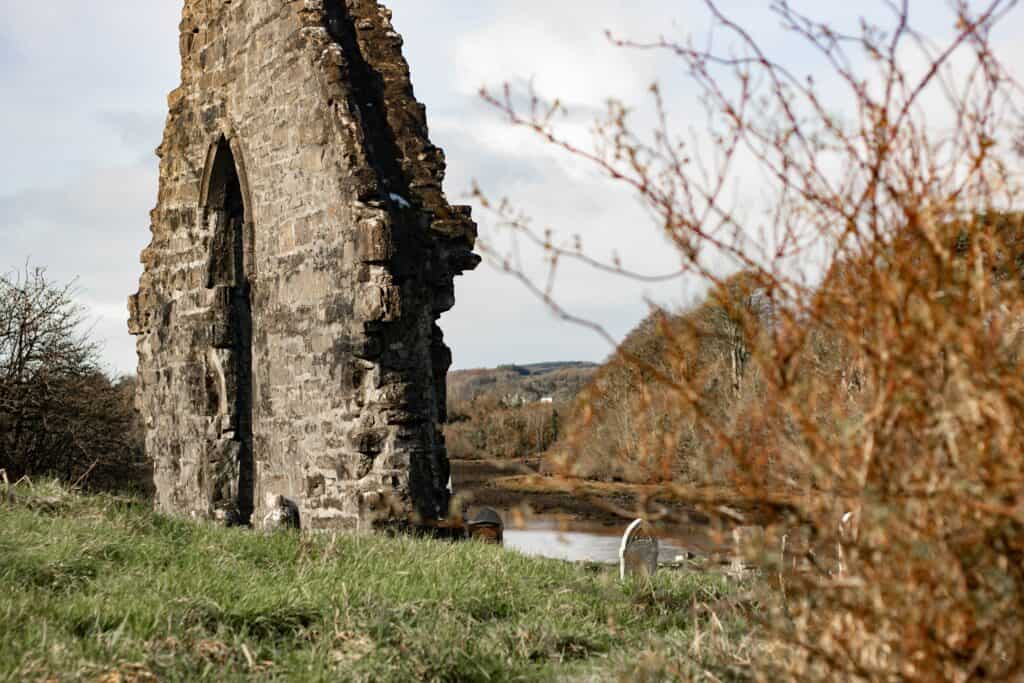
Scottish Bean Nighe
Since the Scottish name Bean Nighe is derived from the Old Irish language, the fairy washerwoman of Scotland may well be related to the Irish banshee fairy. Yet, the two creatures are different in several details.
John Gregorson Campbell was a folklorist who worked in Scotland in the latter half of the nineteenth century; his work was published posthumously in 1900 and 1902. He believed that “a bean shìth is any otherworld woman; the bean nighe is not a specific otherworld woman.” That would be to say a Bean Nighe is a type of Banshee.
The Scottish Bean Nighe is described in some tales as having one nostril, one big protruding tooth, webbed feet, and being dressed in green. As the “Washer at the Ford,” she wanders near deserted streams where she washes the blood from the grave clothes of those about to die.
It is said that Mnathan Nighe (the plural of bean nighe) are the spirits of women who died giving birth and are doomed to do this work until the day their lives would have usually ended.
In the ancient Celtic epic The Ulster Cycle, the Morrígan (a Celtic war goddess) is seen as a Bean Nighe. When the hero Cúchulainn rides out to war, he encounters the Morrígan as a hag washing his bloody armour in a Ford. From this omen, he realizes this battle will be his last.
Somewhere Between Past and Present – The Legend of the Banshee
Today, the best places to find stories of Banshees are within the Irish and Scottish lore anthologies. Some contemporary authors, such as Terry Pratchett in the novel Reaper Man, use Banshees, but on the whole, the Banshee fairy is not used frequently in modern literature or art.
Specific forms of media, however, such as role-playing and video games, include the Banshee among their pantheon of mythical creatures. Her presence in mythology has also inspired some haunting female spirits in horror movies.
In reality, the banshee is usually employed as nothing more than a jump-scare, which is a shame as there is a fascinating story about her origin in myth.
Tuatha de Danann and the Banshee
The Goddess Brigid was a member of the Tuatha de Danann and was the first woman in Ireland to wail or keen when her son died. In Cath Maige Tuired, she is credited with creating the custom, which involves a combination of wailing and singing, creating an almost poetic, structured form of crying.
The Banshee is a type of fairy commonly believed to be descended from the Tuatha de Danann in Celtic folklore. In general, fairies can be classified into good and evil. The good fae are usually beautiful, creative, and as tall as humans, while evil fairies are generally more diminutive and have fewer human features. However, the malevolent Dullahaun is an exception in terms of height.
Clíodhna and the Morrigan are also associated with the banshee for the reasons we will outline below.
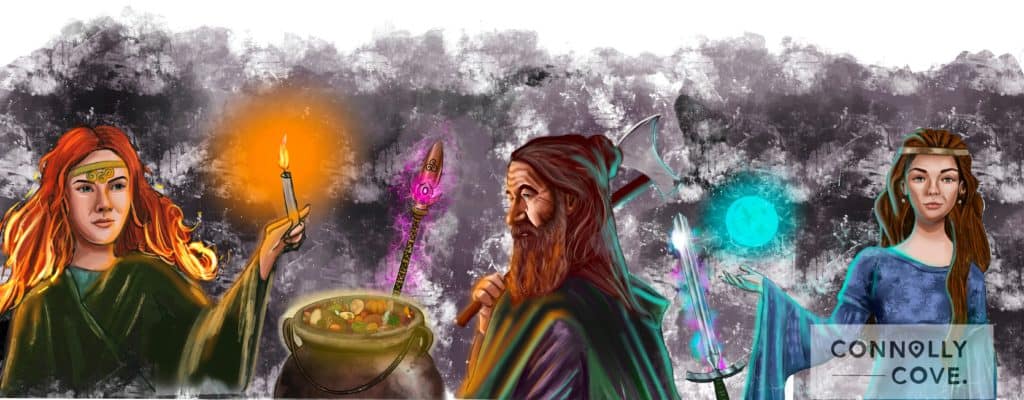
The Queen of the Banshees
Clíodhna has received the title of the Queen of the Banshees and is mainly associated with the southern province of Munster in Ireland. Sometimes referred to as the Celtic goddess of love and beauty, Clíodhna is believed to have control over three otherworldly birds and is said to reside on an Otherworldly island.
Stories about Clíodhna in Irish Myth
In one story, Clíodhna comes to Ireland to be with her mortal lover but is taken back to the Otherworld by a wave controlled by Manannán mac Lir, a sea god, member of the Tuatha de Danann and king of the Otherworld.
Manannán mac Lir is depicted as her father sometimes and has many other notable children, including his foster son Lugh Lamhfháda and his daughter Niamh Cinn Ór. Niamh is the same character that appears in Oisín i dTír na nÓg.
It is worth noting in Irish mythology, the Otherworld refers to any supernatural world. It sometimes describes the afterlife, but in this case, it describes the Land of Youth, where supernatural beings such as the Tuatha de Danann reside.
Clíodhna Creating the Blarney stone
The origin of the Blarney Stone has many different variations. One of the most famous versions involves the Queen of the Banshees:
Cormac Laidir MacCarthy, who built Blarney Castle, found himself in a lawsuit. He pleaded with the goddess for help, and Clíodhna told him to kiss the first stone he saw on his way to court. Cormac did this and spoke his case eloquently, actually winning in the process.
Clíodhnas magic is unrelated to Banshees in this story, but it highlights the powers of the Tuatha de Danann. While each God was unique and the controller of something or another, in general, they all possessed the ability to do magic.
Their abilities were not confined to one specific skill, rather they all could perform basic magic with no real difficulty.
Other versions of the legend include Cormac convincing the Queen of England to let him keep his land or even a version where Robert the Bruce gifted the stone to the King.
This is just one of many versions told throughout Irish folklore. They all vary greatly but share the same sentiment: the stone provided the ability to speak charmingly and almost deceptively without causing any offence.
The term ‘Blarney’ means beguiling but misleading talk. It is no mystery why each case involves using the stone to deceptively get your way and overcome seemingly impossible tasks using your words alone.
In our article about Irish cursing stones, you can learn more about the positive and dark powers of Irish stones in Irish myth.
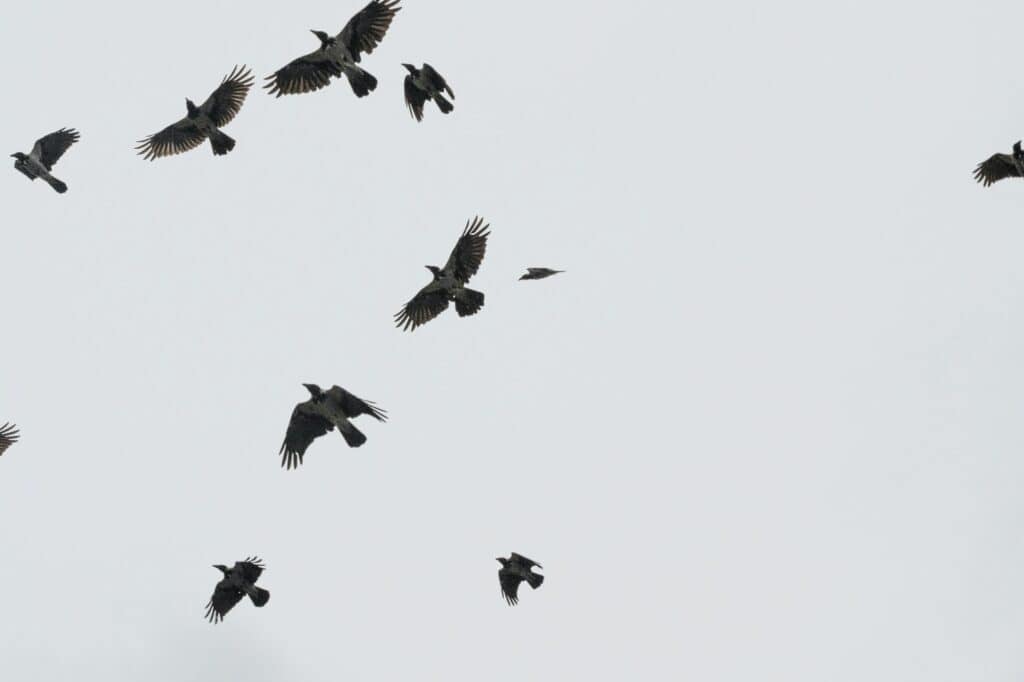
The Banshee and the Morrigan
One version of the origin of the Banshee spirit tells us that the female apparition is later revealed to be the Morrigan, the Irish Goddess of Battles, Sovereignty, and Strife. The Morrigan is the Irish version of the Valkyries who decide the fate of warriors during the Germanic battles, but she is also more than that.
The Morrigan is comprised of a trio of goddesses, usually three sisters with many names who are mysterious.
Badb or Bodb (a version of the word banshee in some parts of Ireland) was a goddess of war who flew over battles as a crow. She could change her appearance at will, from anything to a beautiful lady or an old woman, as well as many forms of animals.
She could also predict the future and foretell prophecies, and Cu Chulainn, the Irish hero, saw the Morrigan washing his armour before entering the battle he died in.
Like the banshee, the Morrigan was often perceived as evil due to her association with war and death. However, in the mythos, she helps and is part of the Tuatha de Danann, Ireland’s ancient heroes. The Morrigan collected the souls of the dead on the battlefield and helped to bring them to the Otherworld. Similarly, the banshee was supposedly tasked with guiding souls in folklore.
A Banshee is similar to the Morrigan, the Celtic triple goddess and representative of death. They can change their appearance, transform into animals (especially crows) and foretell death prophecies. They were both sometimes encountered in the guise of an old woman washing clothes by a river, but the Banshee is often seen as a spirit keening to death at night.
Like the washerwoman, the banshee’s appearance precedes death, and unlike the Morrigan, the Banshee mourns the death of someone she knows.
It is not hard to draw similarities between the Morrigana sisters and the Banshee. They both warn people of death and help them transition to the other. It is more than possible that the triple deity inspires the Banshee.
That is one of the charms of Celtic mythology; there is enough information to draw educated conclusions, but you also have enough ambiguity to think of other theories.
Is There a Logical Explanation for the Banshee? Is the Ghost of the Banshee Real?
Thankfully, Ireland has never suffered too much from the interference of modern ways when it comes to Irish stories, folklore, legends, and myths. Stories of the Banshee have been, and are still are, told around the fire, usually with the storyteller enjoying a glass of Guinness to quench his thirst while he tells the tales of Irish heroes and epic battles.
Maybe the banshee was just a combination of the cry of barn owls and the real-life practice of keening by professional mourners who tried to be mysterious by nature. The origin of the legend is uncertain and unimportant. The legend of the banshee has survived the test of time and tells us a lot about the Celts and how they perceived death.
It is fascinating to see how the Banshee is now portrayed as fulfilling the complete opposite of its original role in modern pop culture and horror lore. In traditional Celtic myth, she watches over a family and breaks tragic news to them, mourning by their side and helping their loved one to pass on to the other world.
Other myths from Ireland to consider reading include the Legend of Finn McCool, Irish Mythology, and, of course, Irish Leprechauns.






